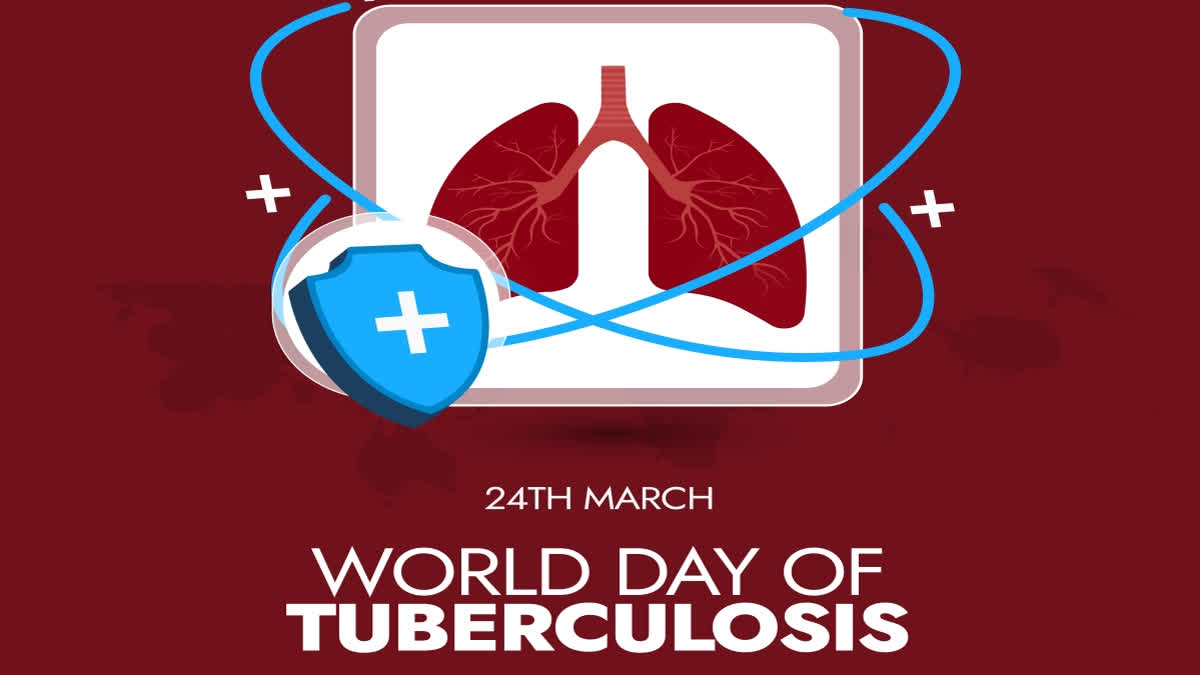Hyderabad: World Tuberculosis Day, observed on March 24 every year across the globe, aims to raise public awareness about the devastating health, social and economic consequences of tuberculosis (TB) and to step up efforts to end the global TB epidemic.
The date marks the day in 1882 when Dr. Robert Koch, German physician and microbiologist, announced that he had discovered the bacterium that causes TB, which opened the way towards diagnosing and curing this disease.
Theme for World TB Day 2024
The theme of World TB Day 2024 - ‘Yes! We can end TB!’. Through the theme, the World Health Organization(WHO) conveys a message of hope that getting back-on-track to turn the tide against the TB epidemic is possible through high level leadership, increased investments and faster uptake of new WHO recommendations.
What is Tuberculosis?
Tuberculosis (TB) is an infectious disease that most often affects the lungs and is caused by a type of bacteria. It spreads through the air when infected people cough, sneeze or spit.
Symptoms of Tuberculosis
People with latent TB infection don’t feel sick and aren’t contagious. Only a small proportion of people who get infected with TB will get TB disease and symptoms. Babies and children are at higher risk.
Certain conditions can increase a person’s risk for tuberculosis disease:
- diabetes (high blood sugar)
- weakened immune system (for example, HIV or AIDS)
- being malnourished
- tobacco use
Common symptoms of TB
- prolonged cough (sometimes with blood)
- chest pain
- weakness
- fatigue
- weight loss
- fever
- night sweats.
Preventing Tuberculosis
The WHO urges the people to follow these steps to help prevent tuberculosis infection and spread:
- Seek medical attention if you have symptoms like prolonged cough, fever and unexplained weight loss as early treatment for TB can help stop the spread of disease and improve your chances of recovery.
- Get tested for TB infection if you are at increased risk, such as if you have HIV or are in contact with people who have TB in your household or your workplace.
- If prescribed treatment to prevent TB, complete the full course.
- If you have TB, practice good hygiene when coughing, including avoiding contact with other people and wearing a mask, covering your mouth and nose when coughing or sneezing, and disposing of sputum and used tissues properly.
- Special measures like respirators and ventilation are important to reduce infection in healthcare and other institutions.
Treatment of Tuberculosis
Tuberculosis disease is treated with antibiotics. Treatment is recommended for both TB infection and disease.
The most common antibiotics used are:
- isoniazid
- rifampin
- pyrazinamide
- ethambutol
- streptomycin.
To be effective, these medications need to be taken daily for 4–6 months. It is dangerous to stop the medications early or without medical advice. This can allow TB that is still alive to become resistant to the drugs.
Tuberculosis that doesn’t respond to standard drugs is called drug-resistant TB and requires more toxic treatment with different medicines.
Alarming facts on TB
- A total of 1.3 million people died from TB in 2022 (including 167 000 people with HIV). Worldwide, TB is the second leading infectious killer after COVID-19 (above HIV and AIDS).
- In 2022, an estimated 10.6 million people fell ill with tuberculosis (TB) worldwide, including 5.8 million men, 3.5 million women and 1.3 million children. TB is present in all countries and age groups. TB is curable and preventable.
- Multidrug-resistant TB (MDR-TB) remains a public health crisis and a health security threat. Only about 2 in 5 people with drug resistant TB accessed treatment in 2022.
- Global efforts to combat TB have saved an estimated 75 million lives since the year 2000.
*All information and stats have been taken from WHO



